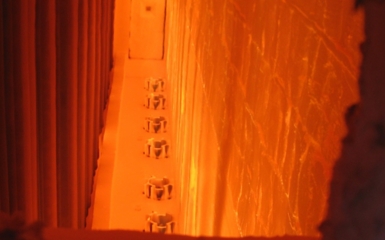Thermal oxidizers are critical components in controlling emissions and maintaining environmental compliance in various industries. However, beyond their primary role in abating volatile organic compounds (VOCs), hazardous air pollutants (HAPs), and other waste gases, there’s a growing interest in enhancing their efficiency through heat recovery.
Why Include Heat Recovery in Thermal Oxidizers?
Integrating heat recovery into thermal oxidizers offers several compelling benefits:
- Reduced Fuel Costs: By harnessing waste heat, facilities can significantly reduce the fuel required to operate thermal oxidizers.
- Lower Electricity Bills: Heat recovery systems can generate steam or thermal energy that can be used in other processes, reducing overall electricity consumption.
- Decreased Carbon Footprint: Waste heat recovery can be used to reduce direct fuel demand for the thermal oxidizer or used to produce steam and reduce fuel consumption for your site steam needs.
- Reduced NOx Emissions: Enhanced efficiency translates to lower nitrogen oxides (NOx) emissions.
These advantages collectively contribute to cost savings and a more sustainable operation, making heat recovery an attractive proposition for many facilities.
Why Not Include Heat Recovery in Thermal Oxidizers?
Despite its benefits, heat recovery also comes with certain drawbacks:
- Increased Capital Costs: Installing heat recovery systems requires a significant initial investment.
- Operational Complexity: The added systems can complicate operations, necessitating more sophisticated control mechanisms.
- More Maintenance: Additional equipment introduces more potential points of failure and maintenance needs.
- Space Requirements: Heat recovery systems require additional plot space, which may not always be available in existing facilities.
These considerations must be weighed carefully to determine if the benefits of heat recovery justify the costs and complexities involved.
System Objectives
The primary objective of a thermal oxidizer system is to abate VOCs, HAPs, and other hazardous waste components effectively. This entails meeting stringent emissions criteria, such as:
- NOx and CO Limits: Adhering to regulatory limits on nitrogen oxides and carbon monoxide emissions.
- Destruction Removal Efficiency (DRE): Achieving high DRE, often 99.9% or more, to ensure comprehensive waste destruction.
- Operating Temperature: Maintaining a minimum operating temperature based on the most recent successful performance test.
System Constraints
When designing or retrofitting a thermal oxidizer with heat recovery, several constraints must be considered:
- Emissions and Air Permits: Compliance with specific NOx, CO, and DRE requirements.
- Existing Equipment: Integration with current components like burners, combustion chambers, air fans, vent stacks, and burner management systems.
- Plot Space: Availability of sufficient space to accommodate additional heat recovery equipment.
Evaluation Criteria
Evaluating the suitability of heat recovery depends on the characteristics of waste streams:
- High Btu Waste Streams: These streams are ideal for heat recovery applications, such as waste heat boilers, steam generation for processes or electricity, thermal fluid heaters, and boiler feedwater preheaters.
- Low Btu Waste Streams: Even lower energy waste streams can contribute to energy savings through air preheaters and waste preheaters, potentially reducing fuel consumption by 40-60%.
Practical Examples
Here are a few examples of thermal oxidizer systems enhanced with heat recovery:
- Basic Thermal Oxidizer: The simplest form focuses solely on waste destruction without heat recovery.
- Thermal Oxidizer with Waste Heat Boiler: Captures and repurposes waste heat to generate steam for process use or electricity production.
- Thermal Oxidizer with Hot Oil Heater: Uses waste heat to maintain temperatures in thermal fluid systems.
- Retrofitting Existing Equipment: Many existing thermal oxidizers can be retrofitted with heat recovery systems, such as adding waste and air preheaters to improve energy efficiency.
Summary
To determine if your thermal oxidizer system can benefit from heat recovery, follow these steps:
- Gather Waste Stream Data: Collect information on current and future waste stream flows and compositions.
- Understand Emissions Requirements: Know your current emissions requirements and how they might change.
- Identify Fuel Alternatives: Look for potential waste streams that can be used as fuel.
- Evaluate Available Utilities: Consider the utilities available for preheating.
For a comprehensive evaluation and potential retrofit, contact John Zink, where our experts can guide you through the process.



